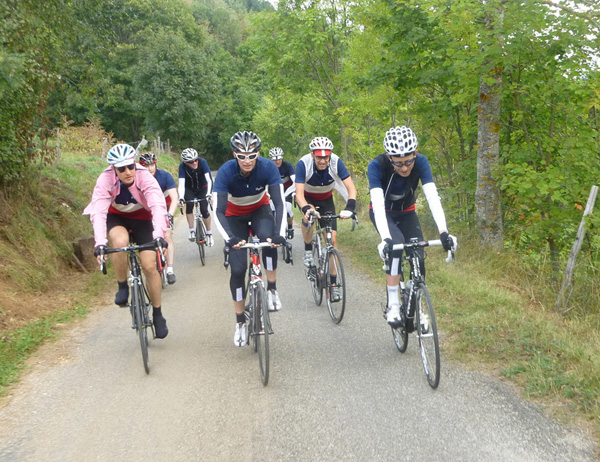This weeks diagram, below, shows a typical progression for the second four-week block of training. It builds on the amount of training hours from the first four-week block, but also incorporates some of the technical elements we’ve looked at in the climbing and descending skills articles of the previous two weeks.

So you can see that instead of simply riding your bike more – you’re adding in slightly longer intervals of higher intensity work with ‘tempo’ or zone three efforts and also harder sustained efforts on the climbs, at zone four or ‘threshold’ pace. This will contribute greatly to your ability to go the distance and not fall apart when faced with the challenge of riding repeated hills.
Apart from the physical requirements, we’ve also incorporated more technical exercises in the shape of the descending practice. This can fit in well with interval work as, if you’re using a hill for some of the zone three intervals, you can simply practice descending skills by riding back down in the recovery intervals. Also think of how you might incorporate the descending skills practice into your other rides when route selecting.

You’ll notice that in week seven there is a break from the normal Saturday ride where you might consider a ride of somewhere close to around 75-80 per cent of event distance in as similar terrain as you can find. This should be approached as if it’s the event itself – so you’re looking to shake-down the actual riding kit and equipment you might carry on the day as well as practicing your pacing strategies and what you need to do in terms of fueling and hydration. We’ll cover these key elements in more details in future articles but be aware that with four to five weeks to go before your first century sportive, you should be practicing all these important elements in your training rides in order to leave nothing to chance on the day.
Hopefully by now you can see a clear pattern emerging. You’re building up individual ride durations, increasing intensity and improving your technical skills while all the time adhering to the ‘progression’ and ‘overload’ principles of conditioning we identified in order to see adaptations.
In short, you’re following a structured training plan that is guaranteed to bring results. It’s more important that you follow the patterns and principles here than the actual number of hours. This programme is based on a rider building to a maximum of 10 training hours per week but obviously different riders will be coming at the plan from different levels of experience and ability and will need to put more emphasis on training in the areas where they are weakest. Hopefully you can see and understand the underlying principles and apply them to create your own customised training programme.
Next week we’ll start looking at the elements we’ll be incorporating into the final four-week block of training leading up to the event itself.
Discuss this week’s training guide in this forum thread.
Part 1: Going for Centuries
Part 2: Breaking down the barriers
Part 3: Goal setting
Part 4: Intensity
Part 5: Get in the Zone
Part 6: Performance Testing
Part 7: Creating a training plan
Part 8: Weekly training plans
Part 9: Be a better climber
Part 10: Improve your pedalling
Part 11: Become a better descender
Part 12: More descending skills
About the author:
Huw Williams is a British Cycling Level 3 road and time trial coach. He has raced on and off road all over the world and completed all the major European sportives. He has written training and fitness articles for a wide number of UK and international cycling publications and websites and as head of La Fuga Performance, coaches a number of riders from enthusiastic novices to national standard racers.
Contact: [email protected]





